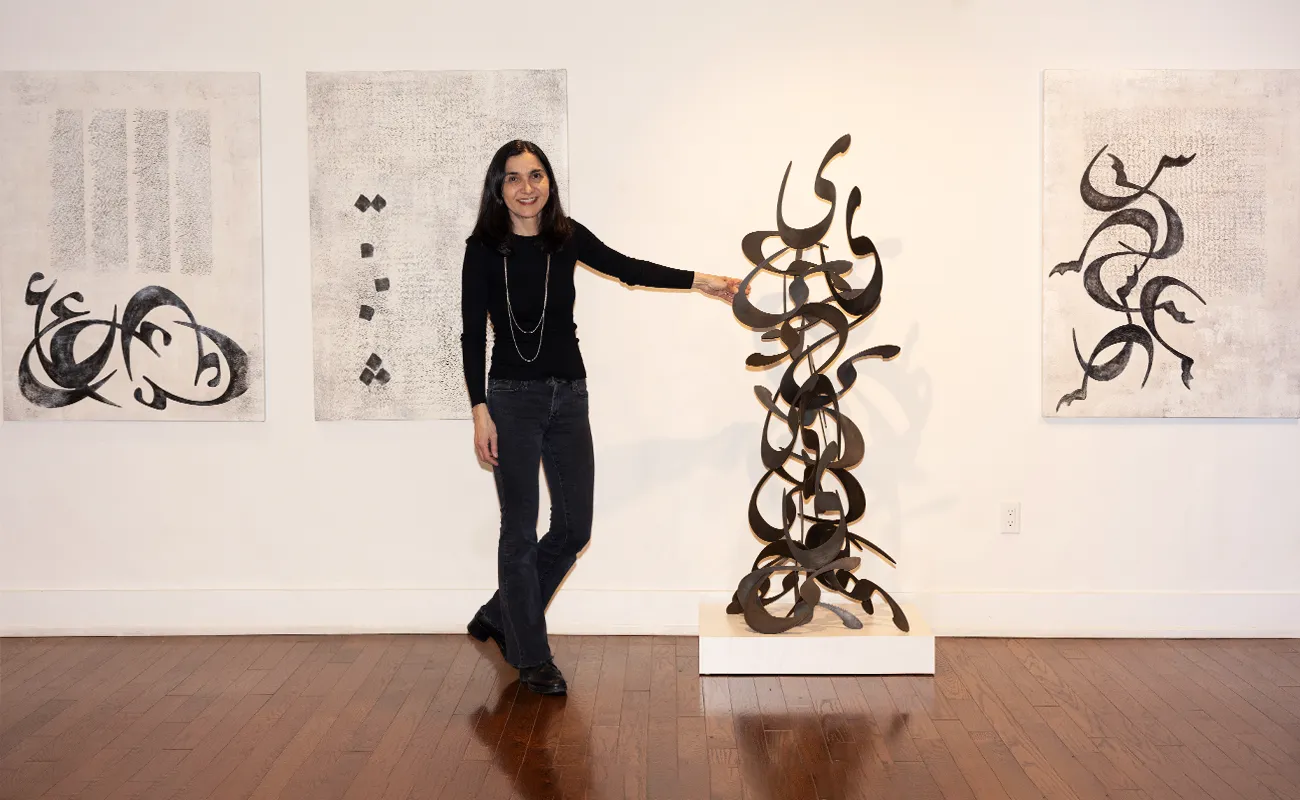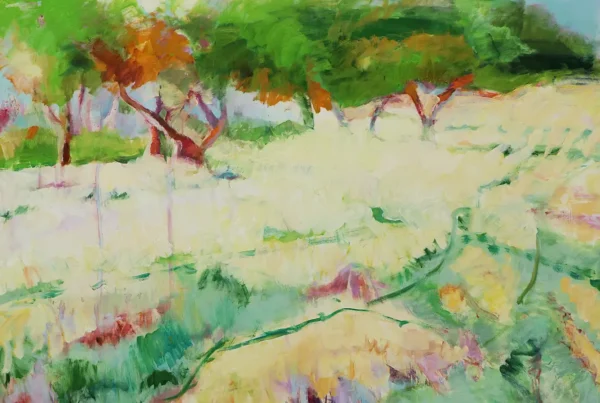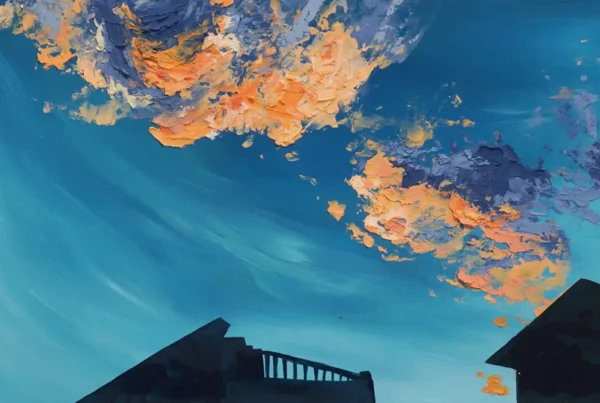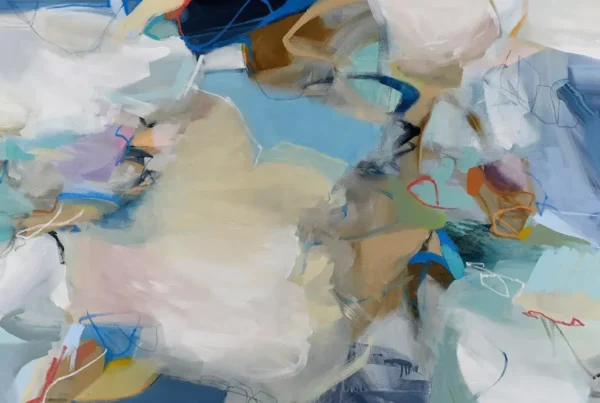“In my exploration of art, I often gravitate to things that are deconstructed, distressed or displaced.”
Bridging Cultures Through Art
Azita Panahpour, an Iranian American artist based in New York City, embodies a journey marked by displacement and cultural amalgamation. Born in Iran, Panahpour experienced the upheaval of the Iranian Revolution, which led her family to move first to England and later to the United States. This sense of displacement has profoundly influenced her artistic endeavors, embedding themes of loss and connection within her work. Her art often grapples with deconstructed and distressed elements, mirroring her fragmented experience between her Iranian heritage and her life in America. Through her photographic projects, Panahpour explores the concept of displacement, inviting viewers to engage with her narrative on a deeper, more visual level.
In her initial artistic forays, Panahpour utilized Persian poems, cutting and deconstructing them to create layered collages. These pieces encouraged viewers to interpret the text visually, rather than literally, marking her first exploration of art through language. Over time, her work evolved to include photographic projects that reflect her travels and conceptual themes, particularly through the lens of children’s experiences of wander and loss. Panahpour’s art remains a testament to her quest for identity and connection amidst the political and cultural turmoil that has shaped her life.

Azita Panahpour: From Advertising to Fine Art
Panahpour’s artistic journey began in the world of advertising, where she served as an art director for various agencies. In this role, she honed her skills in creative direction and typography, learning how the presentation of text—through layout, font, size, and placement—can significantly enhance its message. This experience laid the foundation for her transition to fine art, where she seamlessly integrated typography into her paintings.
Her series “Shattered Poems” epitomizes this fusion of text and art. The project began with a challenge: to visualize a verse from Rumi, the renowned 13th-century Persian poet. Instead of traditional calligraphy, Panahpour opted for a contemporary approach, abstracting the Persian Nasta’liq script into visual poetry. By deconstructing phrases into individual letters and treating these letters as shapes, she created rhythmic, gestural compositions that transcend linguistic meaning. These works, whether on canvas or as steel sculptures, reflect her narrative and background as an Iranian American, blending cultural elements in a unique, emotive dialogue.

Deconstructing Language and Culture
Panahpour’s artistic style is characterized by abstraction and the deconstruction of written language. Her initial challenge of visualizing Rumi’s poetry evolved into a broader exploration of Persian script and its aesthetic potential. By focusing on the forms of letters rather than their phonetic value, she crafts pieces that speak to the viewer through visual rhythm and movement. Her method involves meticulously cutting and selecting letters, arranging them in ways that create a dynamic, emotive flow on the canvas. This process not only abstracts the language but also invites viewers, especially those unfamiliar with Persian script, to engage with her cultural narrative on an intuitive level.
One notable work from her series, “Shattered Poems #21,” highlights her early influences and techniques. The piece features the Persian letter “Teh” prominently placed to divide the canvas into two color planes. The top plane, a rich crimson red, is textured to resemble a distressed wall, while the letter’s placement creates a balance and tension reminiscent of Franz Kline’s bold strokes. This piece, with its combination of simplicity and emotional depth, encapsulates Panahpour’s ability to convey complex sentiments through minimalistic forms.

Azita Panahpour: Sculpting Visual Poetry
Panahpour’s work is not confined to two dimensions. Her foray into three-dimensional art, particularly with her sculptural pieces, represents an evolution of her artistic vision. In these works, she continues to explore the Persian Nasta’liq script, transforming it into tangible, dynamic forms. One such sculpture, “Gaf,” features the Persian letter repeated nine times in various rotations to form a harmonious sphere. This piece juxtaposes the serene, spherical structure with three dangling letters, creating a visual tension that embodies her theme of perfect imperfection.
Her choice of medium is integral to her artistic expression. The transition from acrylic on canvas to steel sculptures allowed her to expand the scale and impact of her work. The elegant curves and lines of the Persian script, set against the hard, resilient surface of steel, create a striking contrast that amplifies the emotional resonance of her pieces. This interplay between form and material underscores her narrative of cultural fusion and displacement, making her work a powerful commentary on identity and belonging.
Panahpour continues to innovate, dreaming of new projects that blend her paintings with photography, adding layers of light and shadow to her visual narrative. Her work remains a testament to her relentless pursuit of artistic expression, bridging cultures and identities through her unique visual language.






